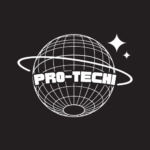Granular recovery technology (GRT) has recently vaulted into the limelight as a critical component of modern data management and protection strategies. However, with an array of complex technologies and techniques involved, understanding GRT can be as daunting as it is crucial. This comprehensive guide unpacks granular recovery technology, illustrating its paramount importance in the era of data proliferation.
Introduction to Granular Recovery
Granular recovery stands at the frontier of data restoration, offering a precision-focused approach to data management. Unlike broad-stroke methods that restore entire datasets, GRT zeroes in on the minutia, salvaging specific documents, emails, or database entries without needing a full system recovery. Herein lays the foundation for a nuanced discussion on why granular control is indispensable in contemporary IT landscapes.
Understanding the Need for Granular Recovery
Traditional backup methods are akin to using a sledgehammer where a scalpel is needed—they’re effective to an extent but lack the finesse required for precise, efficient data recovery. Full-scale recoveries are often overkill when a pinpointed approach would suffice. We’ll explore why recovering individual data components can save valuable time and resources and limit disruptions to business operations.
How Granular Recovery Works
Understanding how granular recovery intervenes where standard measures falter illuminates its inherent advantage. This section contrasts conventional methods by dissecting the granular recovery process, technologies, and techniques. We further illustrate GRT’s unique ability to address the sophisticated demands of complex data environments.
Benefits of Granular Recovery Technology
From boosting recovery speed to cutting costs, the advantages of GRT are manifold. It isn’t just an incremental upgrade from its broader counterparts; it’s a leap ahead, ensuring businesses can restore critical data swiftly and with unparalleled accuracy. Evidence of these claims can be found through various metrics, such as reduced downtime and more precise data management.
Applications and Use Cases
The real-world utility of granular recovery spans various scenarios, from rescuing individual emails in busy servers to reviving single files lost in vast databases. The flexibility of GRT shines across different platforms and environments, including virtualized spaces. Illustrative case studies highlight the versatile nature of GRT across industries, from healthcare to finance.
Implementation and Best Practices
Leaping from theory to practice, this section guides selecting, integrating, and maintaining granular recovery solutions. It stresses the importance of aligning GRT with existing backup systems and offers best practice benchmarks for enterprise applications. Vigilance in maintenance and ongoing training form the bedrock of successful GRT deployment.
Granular Recovery in Disaster Recovery Planning
Granular recovery plays a starring role within disaster recovery frameworks, safeguarding businesses against catastrophic data losses. Here, we will demonstrate how GRT buttresses organizational resilience against unforeseen disasters, aiding compliance with stringent regulatory statutes regarding data.
Future Trends and Innovations
With the advent of cloud services and advancements in AI, the future of GRT is teeming with potential. This prognosis envisions how emerging tech trends will cast GRT in new roles, enhancing its already formidable capabilities in data restoration.
Challenges and Considerations
No technology is without its hurdles. Concerns around data privacy, scalability, and compatibility with legacy systems loom large on the horizon for GRT. Addressing these challenges head-on allows a balanced understanding of granular recovery’s place in today’s IT ecosystem.
Case Studies and Success Stories
Quantifying GRT’s impact can be best done through case studies that concrete its successes and return on investment. Candid discussions on lessons from field applications impart valuable learning experiences
Conclusion
The expedition through the ins and outs of granular recovery culminates here as we reflect on the crystallized understanding of its significance. In closing remarks, a future outlook bolsters the importance of staying agile in the face of GRT advancements and the necessity of iterative improvements in its application.




